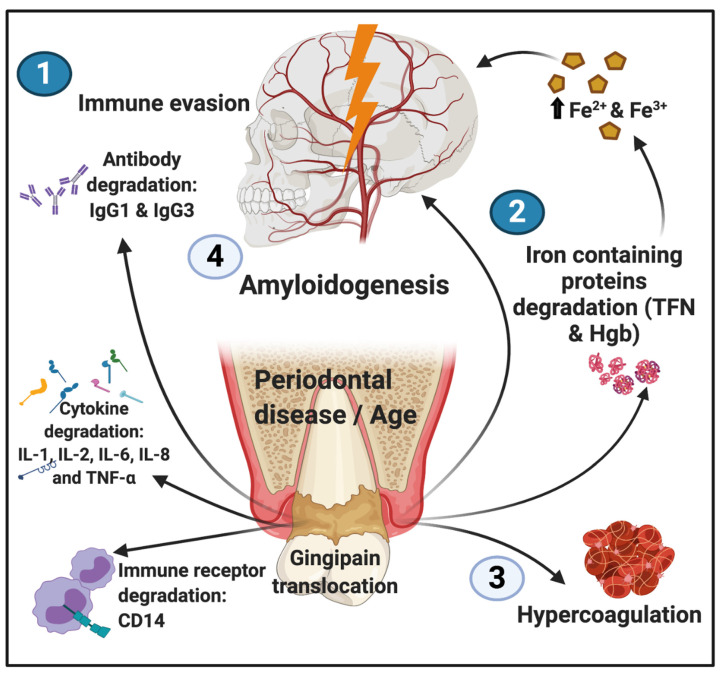Figure 5.
An overview of the effects of the translocation of bacterial gingipain into the circulation: (1) immune evasion brought about by proteolytic degradation of antibodies, cytokines, and immune receptor CD14; (2) proteolytic degradation of transferrin (TFN) and haemoglobin (Hgb); (3) hypercoagulation caused directly by contact of platelets with gingipain proteases; and (4) amyloidogenesis, resulting not only from direct contact of neurons with gingipain proteases but also indirectly as a result of increased iron levels, which occur due to the degradation of iron-containing proteins.

